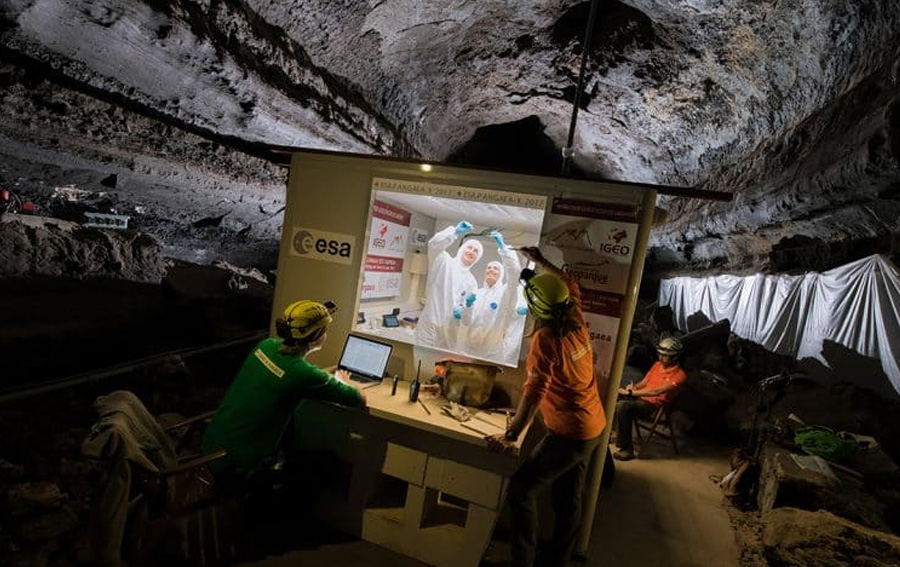
At least 3,545 potential caves on 11 different moons and planets throughout the solar system, including the Moon, Mars and moons of Jupiter and Saturn, have been identified by astronomers. Cave formation processes have even been recognized on comets and asteroids. The discoveries in such caves could be massive. And now an international collaboration of space scientists wants to know if there life in those caves.
Northern Arizona University (NAU) researcher Jut Wynne, assistant research professor of cave ecology, is the lead author of two new related studies, both published in a special collection of papers on planetary caves by the Journal of Geophysical Research-Planets. The first, “Fundamental Science and Engineering Questions in Planetary Cave Research,” was done by an interdisciplinary team of scientists, engineers and astronauts who produced a list of what they think are the 53 most important questions we should be asking about extra-terrestrrial caves (The second, “Planetary Caves: A Solar System View of Products and Processes,” was born from the first study). The team hopes their work will inform what will ultimately be needed to support robotic and human missions to a planetary cave—namely on the Moon and/or Mars.
“Caves on many planetary surfaces represent one of the best environments to search for evidence of extinct or perhaps extant lifeforms,” Wynne said. “For example, as Martian caves are sheltered from deadly surface radiation and violent windstorms, they are more likely to exhibit a more constant temperature regime compared to the surface, and some may even contain water ice. This makes caves on Mars one of the most important exploration targets in the search for life.” And not just for finding life—caves on the Moon and Mars could make good locations for astronaut shelters for both solar and galactic radiation.
Indeed, the search for life may lead explorers in many surprising directions. U.S. and Indian astronomers, for example, have discovered that large amounts of water exist in the moon’s topsoil, which, they theorize, was formed by the reaction of hydrogen ions in the solar wind with oxygen containing compounds in the soil, or delivered by crashing comets. Acording to science writer William B. Stoecker (Atlantis Rising Magazine #79) some think the Moon’s ‘sinuous rilles;’ save for the lack of tributaries, may have been carved by water. Other astronomers argue they are collapsed lava tubes, but there are problems with such theories. Lava tubes tend to be on the surface; the rilles are canyons cut or eroded somehow below the surface. Many go uphill (neither water nor lava can flow uphill), like Schroeder’s Valley, which is 160 kilometers long, up to 1300 meters deep, and ten kilometers wide. Lava could not flow anywhere near 160 kilometers before cooling and solidifying; and even in the lower lunar gravity, a tube would collapse under its own weight even if far narrower. The rilles do not look in any way artificial, but they are clearly evidence of natural forces which we do not understand. Some have even theorized that they were gouged out by interplanetary lightning.
Using the existing infrastructure of a planet’s surface and subsurface, such as caves, may help humans get to other planets sooner than if we had to bring everything needed to survive with us.
Here on Earth humans have been living in caves for hundreds of thousands of years. When none were available, we built our own. “As such,” said Wynne “it is only natural to assume that caves will offer similar utility as humanity expands to other worlds. While planet-wide terraforming may be an end goal, the use of large, pre-existing structures such as caves and lava tubes may be a more practical way to bootstrap the technology to the maturity needed to tackle the surface of an entire planet.”
https://news.nau.edu/space-exploration-goes-underground/


















